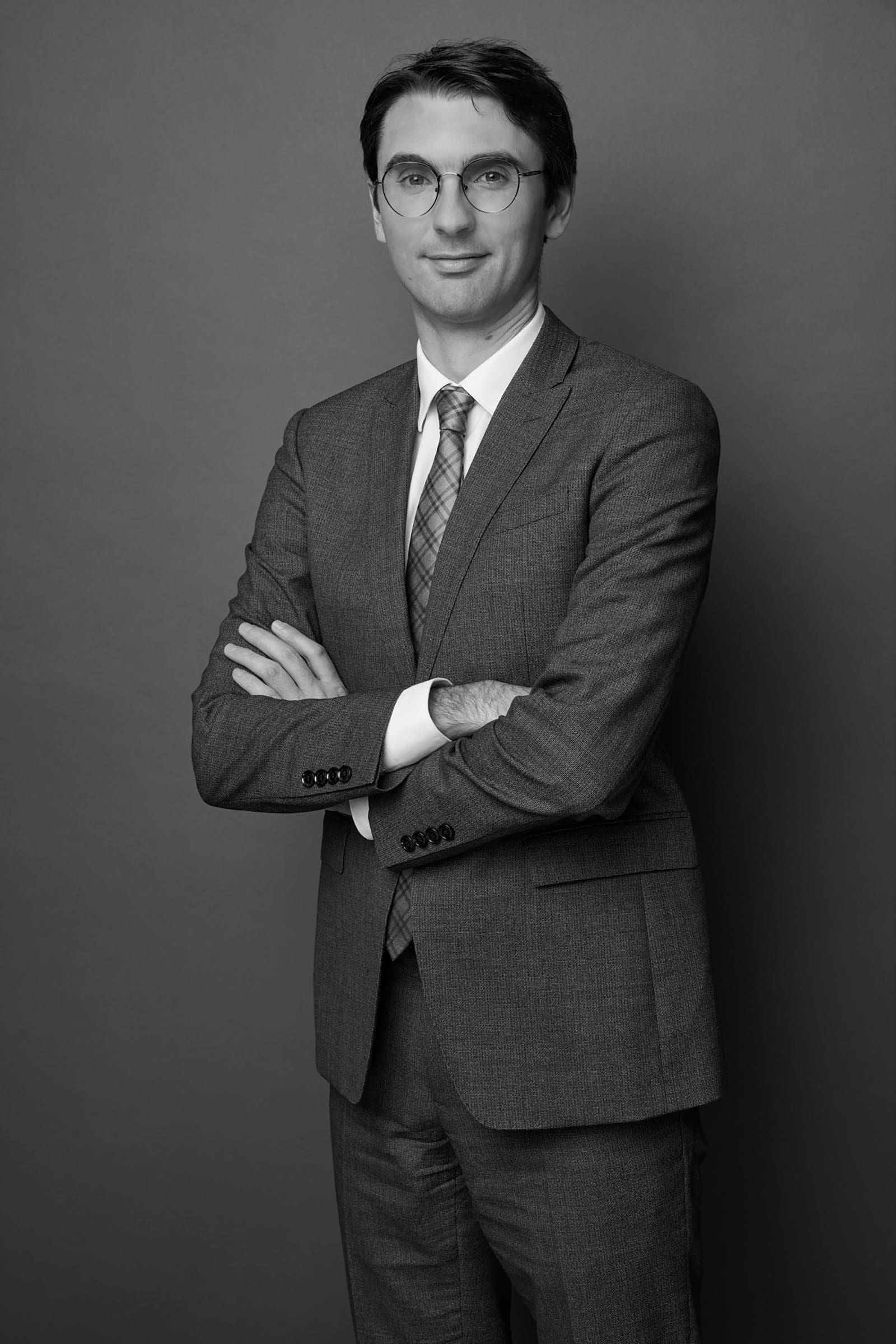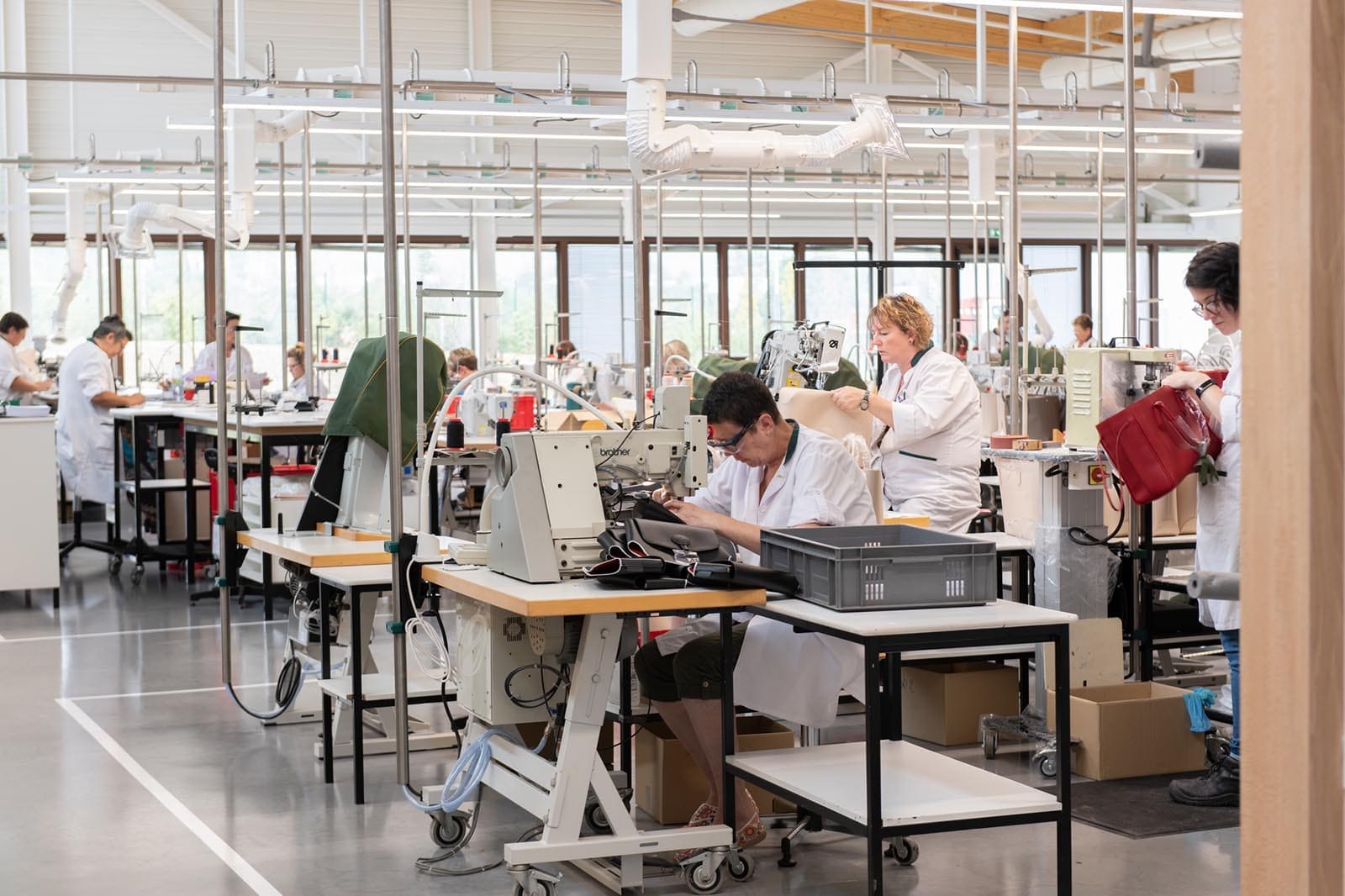Courtesy of Longchamp
Luxury wouldn’t be supreme without its ateliers and factories, and this season, Longchamp is paying homage to its five workshops in France.
“All our products are made to be used. They are designed for women living in the real world and meant to be worn daily,” says Adrien Cassegrain, transformation and CSR (Corporate Social Responsibility) director for Longchamp. You might not see him wearing a Le Pliage, but he does champion a belt and messenger bag from the brand that has kept his family in business for over 75 years.

Adrien views “building a bag as an art form,” with every step, from cutting the leather to assembling the final product, which is why the brand this year has launched a campaign titled ‘The Art of Savoir-Faire’ to celebrate the craftsmanship behind each design. Since 2007, Longchamp has been recognized by the French state as an ‘Entreprise du Patrimoine Vivant,’ or Living Heritage Company, a prestigious label awarded to businesses with the highest standards of artisanal and industrial savoir-faire. It’s bestowed to over 1000 companies who are ambassadors of the excellence of ‘Made in France’ to domestic and international buyers, including brands such as Petit Bateau, Repetto, and Van Cleef & Arpels.
Explaining the meaning behind this title, Adrien says, “I think there are two important words: ‘living’ and ‘heritage.’ Heritage refers to the recognition that we are preserving a know-how that has been around for a long time and that we have mastered it. That’s the first part. The second important part is that it’s a ‘living’ heritage. It’s not something that we simply received from the past and haven’t evolved; it’s something that is continuously living. It’s something we need to keep working on.”

Open to innovation, Longchamp has a dedicated workshop in Segré that specializes in assessing textiles they want to develop and receive, ensuring “the right material that fits the intended use” for production. “It’s curiosity that drives us to push our boundaries and step outside our comfort zones to try new things, to develop and test.”
Whether collaborating with designers such as Jeremy Scott and Mary Katrantzou, or fusing its distinguishable Russian leather flap with the mesh grocery bag by Filt, as seen on Emily in Paris, Longchamp consistently explores new creative possibilities. It took 24 different prototypes and months of refining to create the updated Le Roseau bag, a streamlined open tote with a bamboo-inspired toggle closure, a design introduced in the mid-nineties.

Although the brand introduces new products every season, style, like wisdom, only gets better with age. Longchamp is committed to preserving the endurance of its bags, regardless of age or model. Adrien explains, “We’re able to repair all our products…when we repair a product, we allow the owner to use it for longer, which gives it more longevity.” He even shares an example from last week, when a bag over 30 years old was serviced at the repair workshop. This dedication to quality and sustainability allows Longchamp clients to enjoy their beloved items for decades with what can be described as “emotional durability,” a lasting connection to their cherished possessions that transcends time.
Each year, Longchamp restores over 60,000 products across five workshops in France, located in Château Gontier, Ernée, Pouzauges, Rémalard, and Segré. The company understands that “everything we do has an impact,” particularly on the environment, with leather production being a key factor. “We know it’s environmentally costly, but it’s necessary to create quality products that last.”


To minimize impact, they measure and track their carbon footprint and water usage, and they ensure all leather meets high environmental standards through the Leather Working Group (LWG) certification. At their workshops and production sites, the company has implemented architectural solutions, such as maximizing natural daylight, installing solar panels, planting 12,500 trees, and introducing sheep and beehives to promote biodiversity and enhance environmental balance.
In a similar vein, Adrien uses an eco-conscious analogy to describe his long-term vision for the family business, particularly about the next generation. “There are already a lot of good seeds within our DNA…we have to nurture these seeds and help them grow correctly,” he explains, emphasizing the importance of passing skills from the old masters to the apprentices. Above all, he shares his hopes the company will remain “an independent, family-owned, and Parisian brand,” staying true to its roots, and continue being proud of it’s legacy. Adrien is focused not only on maintaining the heritage of the brand, but also on ensuring it evolves responsibly, staying agile and relevant in a fast-changing world, while upholding the core values that have made Longchamp a symbol of quality and craftsmanship.
- Kim Sejeong Takes Her Business Leave For Longchamp’s Latest Collection
- Longchamp’s Latest SS ’24 Collection Draws Breath from the Freedom of University Life
- In Higher Demand: Longchamp CEO Jean Cassegrain on Sustaining Success Amidst an Evolving Fashion Industry
- Made with Love: Longchamp Pays Tribute to Robert Indiana’s Artistic Legacy
